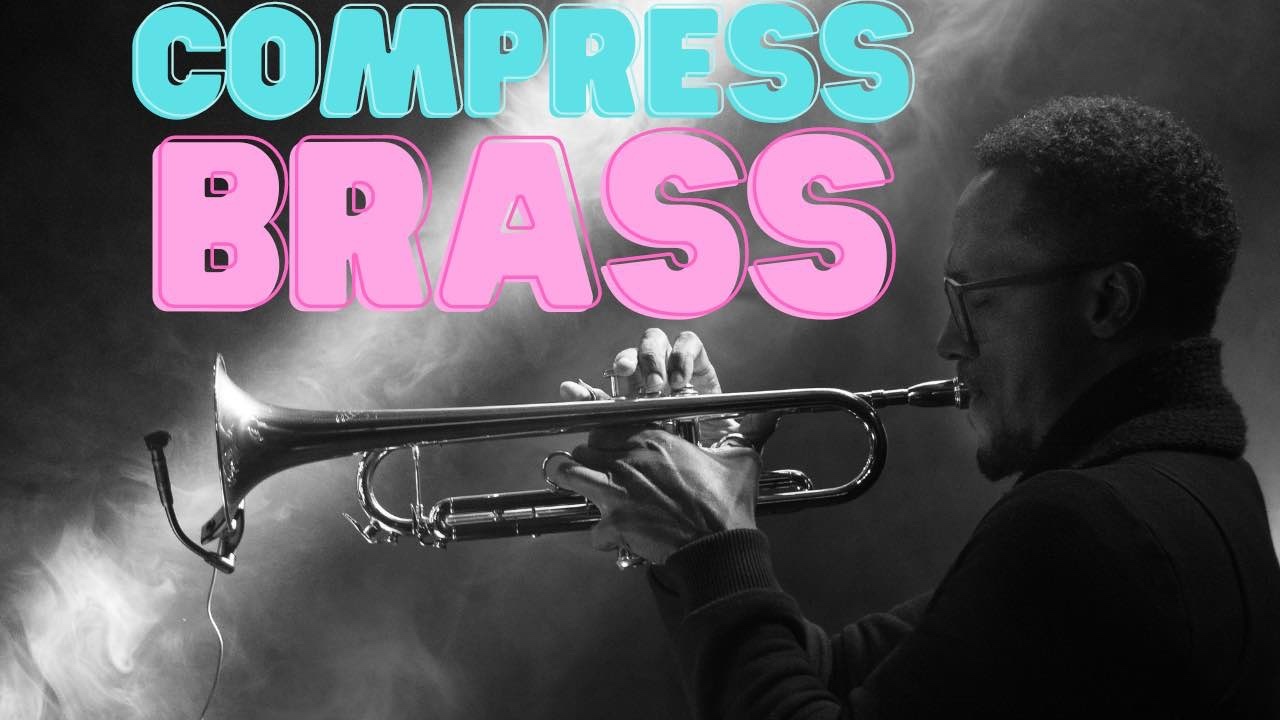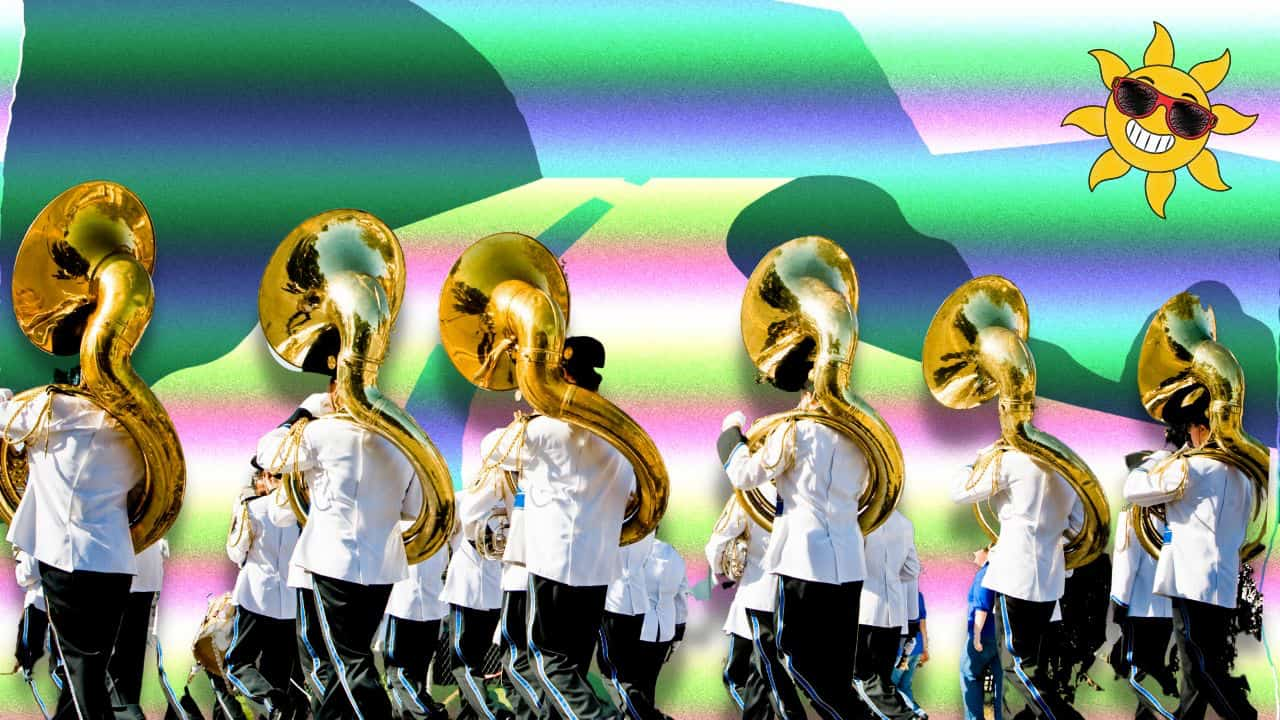How to Compress Brass

Compression is one of the most essential tools in any producer or engineer’s kit.
It has become a fundamental process in modern mixing.
However, the process of compressing instruments is often misunderstood, which can make it difficult for beginners (and even intermediate mixers) to craft pro mixes.
And if you want to make your brass really stand out, click here to learn how to EQ brass.
Note: this article may contain affiliate links, which mean that I receive a commission for any purchases you make, at no added cost to you.
Challenges of Compressing Brass
Horns can be everything from loud and bombastic to soft and smooth. They are some of the most dynamic instruments around. As it goes, the more dynamic an instrument, the more difficult it often is to compress.
I often like to keep my brass compression pretty subtle, as heavy compression can start to make the instrument sound unnatural. Of course, if you’re going for an 80s-style synth brass horn sound, then the dynamics probably aren’t a priority.
The challenge of compressing brass lies in striking the perfect balance between subtle and controlled. Let’s look at a few settings you might consider using on your brass instruments.
Trumpet Compressor Settings
Trumpets have a lot of high-end information, meaning you generally don’t have to worry about low-mids attacking your compressor harder than the other frequencies like you do with vocals or bass.
This means that you can often have subtler compression settings to look your compressor into place.
I often like to go with an optical compressor, such as the LA-2A, as it has a slow attack and slow release, giving you a natural sound that doesn’t mess with the attack of your trumpet. Try for 3-5dB of optical compression to control the dynamics without disrupting the transients.
Tuba Compressor Settings
The tuba has a lot more low-end than the trumpet, meaning it can be harder to control. Depending on the mix, I often like to treat the tuba as a bass instrument, meaning I try and lock in the dynamics to create a steady low-end for the rest of the track to sit atop.

I typically like to use a FET compressor, such as an 1176, with the attack dialed back to allow the transient through and the release pretty fast, so it doesn’t hold onto the tail. If the compressor isn’t enough, I’ll sometimes use multi-band compression to lock in the lows below 170Hz.
Trombone Compressor Settings
I often like to treat trombone a lot like trumpet, even though it has more information in the low-mids. Though it needs more control, compressing it too hard can take the natural sound away.
Start with an optical compressor for slow attack and release, and dial in anywhere from 3-5dB to start.
If you don’t have an optical compressor to work with, use a 2:1 to 3:1 ratio for subtle compression and dial the release so that the needle or meter on the compressor is “breathing” in time with the song.
Brass Section Compression settings
As I mentioned before, using compression on brass (unless you’re going for a crushed or synth-like sound) is not all too common. I often find myself riding faders to keep things in control.
With that said, if you need to compress an entire brass section, it’s best to keep it subtle with optical compression or minimal VCA compression. If often shoot for a ratio around 2:1 to 3:1 with a slow attack and release.
Always make sure you adjust the output level to match the input level so you don’t trick yourself into thinking it sounds great because of the added gain.
Learn more about Mixing with Compression
This is only one part of mixing with compression! Luckily, I've put together a bunch more articles to help you master this crucial mixing skill!
- How to Use a Compressor: Learn to Mix with Compression Quickly!
- Sidechain Compression Explained for Beginners & Key Settings
- 3 Tips for Using a Sidechain Compressor to Add Punch & Clarity
- Multi-band Compression Tutorial for Great Vocals, Drums & More!
- How to Use Mid-Side Compression for Amazing Recordings!
- How to Use Parallel Compression for Powerfully Punchy Mixes
- Should You Compress Reverb? The Real Answer Finally Revealed.
- The 5 Types of Compressors (And Exactly When To Use Each)
- 10 Vocal Compression Mixing Tips (Including Best Settings)
- 9 Powerful Drum Compression Techniques for Punchy Pro Mixes
- Loud, Punchy Kick Drums with these Compression Settings
- How to Compress Snare - Use *These* Settings Punchy Snares
- Exactly How to Compress Bass for Tight Low End Thump!
- How Compress Acoustic Guitar Perfectly, Every time
- How to Compress Synthesizers: Best Compressor Settings for Synths
- How to Compress Organ: 4 Steps to a Great Mix!
- How to Compress Percussion: Compression Settings for Everything
- How to Compress Strings: 8 Magic Settings You Need to Know
From a Frustrated Producer in a Ragtag Bedroom Studio to Major Placements on TV Earning $1,000s!
My name is Evan, and I've been making music since around 3rd grade. I'm from San Diego, California, but I've lived in Washington, DC for the last 20 years.
While I still have a full-time day job, I have created systems that have allowed me to produce dozens of songs a year in my spare time.
My songs have been on Netflix, TV shows like the 90 Day Fiance, an award-winning indie film, and NPR’s “All Thing Considered.” They've also been streamed millions of times.
In addition to being a music producer, I am passionate about teaching people how they can make professional-sounding music and earn money licensing it, all in their spare time.
Thousands of musicians, like yourself, have trusted me to guide their musical journey. My YouTube videos have been watched nearly a million times. And my story has been in Forbes, Side Hustle Nation, and the Side Hustle School.





